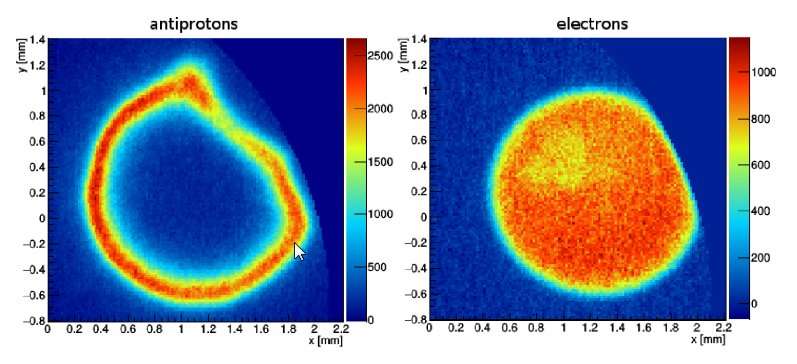Antimatter study to benefit from recipe for ten-fold spatial compression of plasma

An international team of physicists studying antimatter have now derived an improved way of spatially compressing a state of matter called non-neutral plasma, which is made up of a type of antimatter particles, called antiprotons, trapped together with matter particles, like electrons. The new compression solution, which is based on rotating the plasma in a trapped cavity using centrifugal forces like a salad spinner, is more effective than all previous approaches.
In this study published in EPJ D, the team shows that鈥攗nder specific conditions鈥攁 ten-fold compression of the size of the antiproton cloud, down to a radius of only 0.17 millimetres, is possible. These findings can be applied in the field of low-energy antimatter research, charged particle traps and plasma physics. Further, this work is part of a larger research project, called AEgIS, which is intended to achieve the first direct measurement of the gravitational effect on an antimatter system. The ultimate goal of the project, which is being pursued at CERN, the Particle 糖心视频ics Laboratory in Geneva, Switzeeuropeaand, is to measure the acceleration of antimatter鈥攏amely antihydrogen鈥攄ue to Earth's gravity with a precision of 1%.
In this study, the authors use a plasma manipulation method called the rotating wall, which they have optimised. They employ specially tailored electrical fields, changing in time and space inside the trap volume, to induce modification of the rotation frequency. Due to the resultant centrifugal force, the plasma rotates faster and is compressed.
Specifically, the proportion of trapped antiprotons under compression is initially less than 0.1% of the electrons. During the procedure the number of electrons is reduced so as to maximise compression. To do so, antiprotons and electrons trapped in the same volume rotate around the trap axis. Interestingly, for a given number of particles, the faster the rotation, the higher their spatial density becomes as the plasma radius continues to shrink.
More information: Stefano Aghion et al, Compression of a mixed antiproton and electron non-neutral plasma to high densities, The European 糖心视频ical Journal D (2018).
Journal information: European 糖心视频ical Journal D
Provided by Springer





















